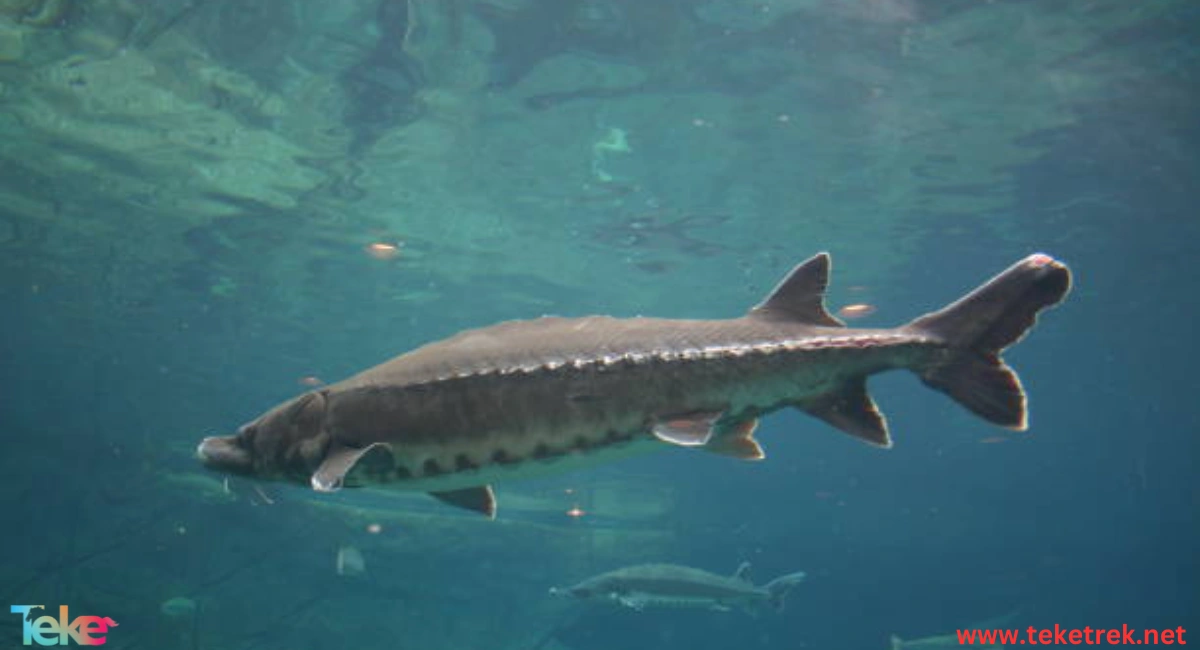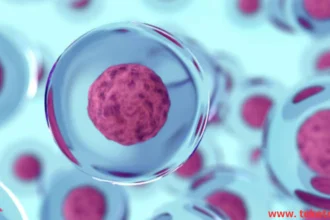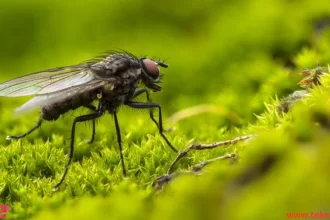Sturgeon is one of the oldest and strangest marine creatures that attracts the attention of researchers and amateurs alike. This fish is characterized by its ability to live in cold and fresh water, in addition to its long history that extends back thousands of years. Sturgeon differs from other fish in its appearance and behavior, which makes it the subject of deep study and understanding. In this article from teketrek, we will learn about everything related to sturgeon: from its habitat and various types to its behavior and unique characteristics.
A glimpse at sturgeon
Sturgeon is a type of fish that lives in fresh and salt water, and its history dates back to approximately 250 million years, making it one of the oldest living marine creatures. Its original habitat is the northern regions of the oceans and great lakes, especially in areas such as the Black Sea, the Caspian Sea, and the Atlantic Ocean. Sturgeon prefers cold and fresh water that provides it with a suitable environment for growth and reproduction.
There are many types of sturgeon that vary in size, shape, and environmental specifications. The most prominent of these species are the Russian sturgeon (Acipenser gueldenstaedtii) and the American sturgeon (Acipenser fulvescens), in addition to the Danube sturgeon and the Caspian sturgeon. These species differ in their physical features, but they all share the ability to adapt to diverse environments.
As for reproduction, sturgeon is a fish that is characterized by its slow reproduction. The female lays her eggs in fresh water or running rivers, and the fertilization process varies according to the species. Although sturgeon can live for several decades, it takes a long time to reach sexual maturity, which contributes to making the preservation of their numbers a major challenge.
Is sturgeon endangered? The impact of overfishing on it
Yes, sturgeon is a highly endangered species, due to several main factors, most notably overfishing and loss of natural habitat. Sturgeon is particularly threatened by overfishing for its eggs, which are known as caviar, which is one of the most expensive foods in the world. Although international laws seek to regulate this activity, illegal fishing still poses a major threat to its continued survival.
In addition to overfishing, sturgeon also faces environmental degradation due to pollution, damming of rivers, and diversion of water for agricultural and industrial purposes, which reduces the areas available for it to reproduce. The decline in population also reduces genetic diversity, making the species more vulnerable to diseases and environmental disturbances.
In recent years, measures have been taken to protect sturgeon, such as banning fishing in some areas, establishing nature reserves, and captive breeding programs. However, this species still faces many challenges to survive in the face of ongoing environmental and economic pressures.
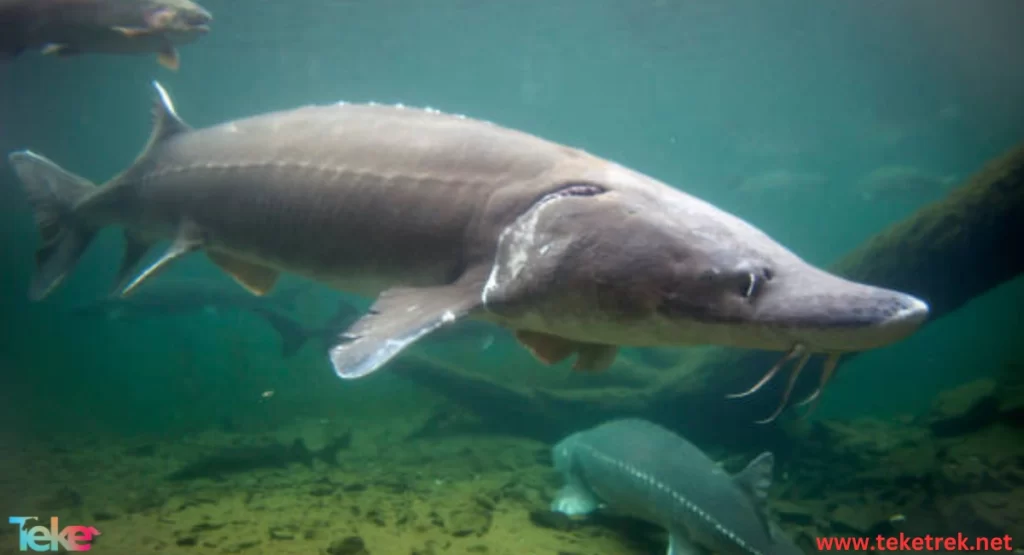
The Best Ways to Cook Sturgeon: Delicious and Tasty Recipes
Here are some of the best ways to cook sturgeon to prepare delicious and tasty meals:
Grilled Sturgeon:
Ingredients: Sturgeon fillets, olive oil, lemon juice, crushed garlic, salt and black pepper.
Method: Mix the olive oil with the lemon juice, garlic and spices. Place the fillets in the marinade and leave for an hour. Then grill the fish for 4-5 minutes on each side until golden.
Oven-roasted sturgeon:
Ingredients: sturgeon, butter, minced garlic, rosemary, lemon juice, salt and black pepper.
Method: Preheat the oven to 180°C. Brush the fish with melted butter and mix with garlic, rosemary and lemon juice. Place in a baking dish and bake in the oven for 25-30 minutes or until cooked through.
Sturgeon in white sauce:
Ingredients: sturgeon, cooking cream, butter, salt and pepper, minced garlic, lemon juice.
Method: In a frying pan, heat the butter and add the minced garlic. When it turns golden, add the cooking cream and lemon juice. Place the fish pieces in the sauce and leave to cook for 10 minutes until the fish is tender.
Baked Sturgeon with Herbs:
Ingredients: Sturgeon, olive oil, rosemary, thyme, salt and pepper, lemon slices.
Method: Place the fish in a tray, sprinkle with olive oil, herbs, salt and pepper. Place lemon slices on top and bake in the oven for 20-25 minutes until golden.
Sturgeon with White Rice:
Ingredients: Sturgeon, white rice, olive oil, lemon juice, salt and pepper.
Method: Boil white rice in the usual way. In a pan, heat the olive oil and add the fish pieces. Cook the fish until golden, then serve with rice and sprinkle with lemon juice.
Characteristics and features of the snakehead fish, and interesting facts about it
Health Benefits of Sturgeon: Why Should You Eat It?
Sturgeon is considered one of the healthy foods that provide many benefits to the human body, thanks to its high nutritional value. Here are some of the most important health benefits of sturgeon:
- Rich in Omega-3 fatty acids: Sturgeon contains high levels of Omega-3 fatty acids, which help improve heart and artery health, and lower the level of harmful cholesterol in the blood. These acids also play an important role in improving brain function and strengthening memory.
- An excellent source of protein: It contains a large amount of high-quality protein, which is essential for building muscles and tissues, as well as strengthening the immune system. Protein also contributes to the healing process and recovery from injuries.
- Promoting bone health: It contains a good percentage of phosphorus and calcium, which are essential elements for bone and teeth health. Eating fish helps strengthen bones and reduce the risk of fractures or bone-related diseases such as osteoporosis.
- Improves skin and hair health: Due to its Omega-3 fatty acids, fish improves skin elasticity and hydration, which helps maintain a young and beautiful appearance. It also helps promote hair health, prevents hair loss and promotes hair growth.
- Reducing inflammation: fatty acids The omega-3s present are considered anti-inflammatory, which helps reduce inflammation in the body. This can be beneficial for people with conditions such as arthritis or heart disease.
- Good for the eyes: It contains vitamin A, which promotes eye health and protects against diseases such as night blindness and visual stress. It also works to maintain the health of the retina and protect it from damage.
- Improves brain function: Eating sturgeon helps improve concentration and attention, and is associated with a reduced risk of dementia and age-related neurological disorders.
The strangest facts about sturgeon
Sturgeon is one of the marine creatures that is characterized by characteristics and secrets that make it very unique. Here are some of the strangest facts about sturgeon:
- Very long life: Sturgeon is considered one of the oldest living fish, as some species can live for more than 100 years! This long life makes it one of the longest-lived marine creatures.
- Its appearance has not changed since ancient times: Sturgeon is called the “living fossil” because it has maintained its appearance and physical shape for more than 250 million years. It is considered one of the oldest fish that still exists today.
- Species vary greatly: There are more than 27 different species of sturgeon, which vary greatly in size and appearance. The largest sturgeon species, such as the beluga sturgeon, can reach lengths of more than 7 meters and weigh more than 1,500 kilograms.
- It has no teeth: Sturgeon does not have teeth like most other fish. Instead, its mouth has two rows of ridges that help it capture its food effectively, and it depends on its diet mainly on crustaceans and small fish.
- It is the female that produces the most valuable caviar: Caviar made from sturgeon eggs is considered one of the most expensive foods in the world. Although all sturgeon species produce eggs, some species, such as the beluga and the Siberian, produce caviar that is considered the rarest and most expensive.
- It can live in salt and fresh water: One of the most unusual things about sturgeon is its ability to adapt to different aquatic environments. Some species can live in salt water, while others move between fresh rivers and salty oceans depending on their life stages.
- Slow-beating heart: Sturgeon have a slow-beating heart, which helps them survive in cold-water environments that require low energy expenditure. This contributes to their evolution as long-lived creatures.
- Habitat loss threatens their survival: Despite being one of the oldest living fish, sturgeon are threatened by habitat destruction, such as dams and river barriers, as well as overfishing for caviar.
- Eggs take years to mature: Female fish take a very long time to reach sexual maturity. Some species of sturgeon may not lay eggs until they are 20 years old.
- Extreme sensitivity to water: Sturgeon are extremely sensitive to water quality The omega-3s present are considered anti-inflammatory, which helps reduce inflammation in the body. This can be beneficial for people with conditions such as arthritis or heart disease.
- Good for the eyes: It contains vitamin A, which promotes eye health and protects against diseases such as night blindness and visual stress. It also works to maintain the health of the retina and protect it from damage.
- Improves brain function: Eating sturgeon helps improve concentration and attention, and is associated with a reduced risk of dementia and age-related neurological disorders.
The Pangolin: The Mysterious Creature Deserving Our Protection!
Sturgeon farming: How is it farmed for caviar production?
Sturgeon farming for caviar production is a complex process that requires special care and precise knowledge of environmental and nutritional conditions. Sturgeon are raised in aquaculture farms under controlled conditions in order to produce caviar, which is considered one of the finest and most expensive foods in the world. Here’s a look at how to raise sturgeon for caviar production:
1. Choosing the right location:
Sturgeon farms are often located in freshwater areas, such as rivers or lakes, or in artificial aquariums. The water should be cool (around 12-18°C) and have suitable chemical properties such as pH level and oxygen balance.
2. Providing ideal feeding conditions:
Sturgeon feed on a diet that includes small fish, crustaceans, and some aquatic plants. In caviar farms, sturgeon are given a special diet consisting of a mixture of plant and animal proteins. The diet is carefully adjusted to ensure that the fish grows healthily and is prepared to produce high-quality eggs.
3. Controlling temperature and oxygen:
In order to successfully raise sturgeon, the water temperature is maintained within certain limits to ensure the normal growth process. Oxygen levels in the water must also be monitored regularly, as sturgeon need high levels of oxygen to live well.
4. Reproduction:
Reproduction in sturgeon requires a certain age to reach sexual maturity. Female sturgeon usually begin to reproduce when they are 7-10 years old, while males reach this stage at 8-12 years old. The mating time is determined according to the season, where eggs are collected from females and sperm from males.
5. Egg collection (spawning):
When the fish matures, the egg collection process is carried out by pressing on the female’s abdomen to extract the eggs carefully. This process is done carefully to avoid damaging the eggs or harming the female. The eggs are then fertilized using the male’s sperm.
6. Egg care and storage:
After fertilization, the eggs are kept in a controlled environment in terms of temperature and humidity. The eggs need a constant and safe environment to ensure the development of the embryos. When the eggs are mature and ready, the harvesting process begins.
7. Caviar harvesting:
After the caviar has matured inside the female (usually after 5-7 years of breeding), the eggs are extracted with great care. The eggs are inspected, packaged and stored according to the highest quality standards to ensure their luxurious taste.
8. By-products:
While caviar is produced, sturgeon meat can be used in the manufacture of other seafood, making sturgeon farming profitable in many ways.
9. Sustainability and Challenges:
Since sturgeon faces environmental threats such as overfishing and loss of natural habitats, some farms are adopting sustainable techniques that contribute to preserving the species and protecting them from extinction. The process also requires modern techniques in the field of fish farming to ensure the health of the fish and the quality of the caviar produced.
The areas in which it lives. Small changes in oxygen levels or water salinity can greatly affect its health, making it in need of a carefully controlled aquatic environment.
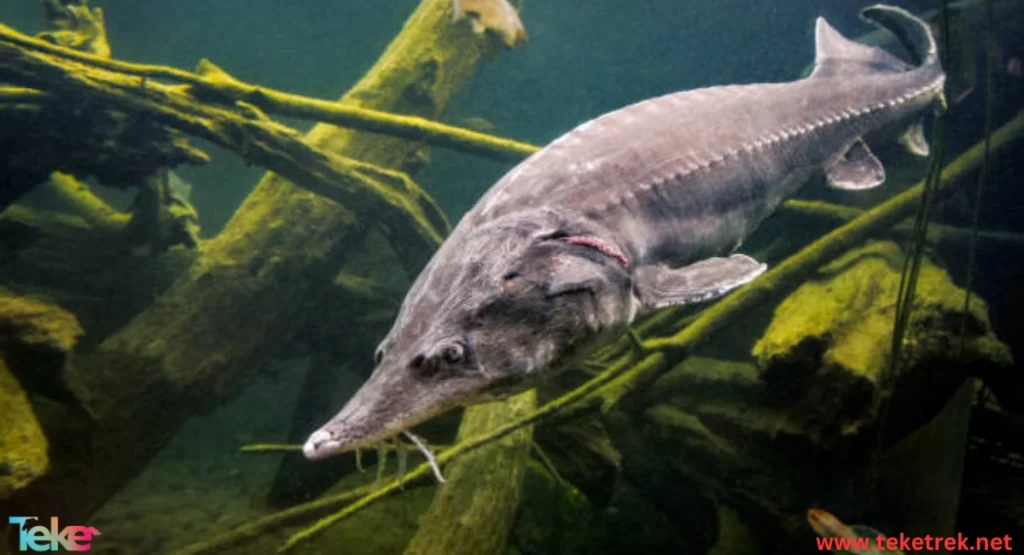
The most important areas in the world for sturgeon fishing
The most important areas in the world for sturgeon fishing include:
- The Caspian Sea: It is one of the most important areas where sturgeon are found, especially caviar-producing species such as the Beluga sturgeon.
- The Danube River: It is known for the presence of many species of sturgeon, and is one of the most important sources of caviar in Europe.
- The United States of America (especially the Mississippi River and its lakes): Where species such as the American sturgeon are caught.
- The Black Sea: Home to various species of sturgeon, including the Russian sturgeon.
- The Volga River in Russia: It contains rare species of sturgeon, and is one of the most important sources of caviar in the world.
In conclusion, sturgeon is a unique marine creature with a long history and the ability to adapt to diverse environments. Despite its economic importance in the caviar industry, it faces challenges that threaten its survival, which necessitates taking measures to protect it. By paying attention to sturgeon farming and protecting its natural environment, we can ensure the continuation of this ancient creature in our marine world.

